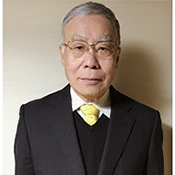
Series Window Terminology à la Carte
Vol. 0: Windows from the Perspective of Contrastive Etymology
28 Mar 2018
- Keywords
- Columns
- Essays
- History
- Literature
Linguist Yasunari Ueda looks into the origins of words that mean “window” from around the world to explore the process through which the concepts of the word have expanded over the ages. We will start this series with his piece titled “Windows from the Perspective of Contrastive Etymology”.
1.Introduction
According to the Japanese dictionary I have at hand, a mado [窓, “window”] is “a hole made in a wall or roof to admit light, air, or views”. This definition of what it is and how it functions should be valid in any cultural region or linguistic area as long as there exists something there that is equivalent to what we call a “mado” in Japanese (such things will be referred to as “windows” henceforth in this piece). When one looks at the words for “window” in different languages, one will see that they can be classified based on why people originally came up with them to describe openings in buildings such as houses and temples. While one could present a cross-cultural analysis by probing deeper into what aspects of the window different peoples focused on when naming them, I will be focusing on a common underlying fact that all of the different types of windows share as their basis—that is, the fact that humans perceive and name things in reality in connection to their own bodies. I would like to examine the etymologies of the words for “window” in different languages from the perspective of cognition and use this as a thread to understand the process through which humans perceive their external environment, conceptualize things within it, and expand these concepts.
2.Origins of Words for “Window” in Different Languages
What meanings did the words for “window” in different languages originally have in the first place? From what I have confirmed so far, it seems that they can be classified broadly into three types. They are “wind eye”, “hole (for light or air)”, and “eye (hole) for looking out”.
First of all, the English word “window” has its origins in the Old Norse word “vindauga”, and it literally means “wind-eye” (“vind” and “auga” evolved phonetically into “wind” and “ow“, respectively). The same can be said of the words “vindöga” and “vindue” used in Swedish and Danish, respectively, both of which are languages that can be traced back to Old Norse (North Germanic). The Spanish word “ventana” also appears to belong to this group.
The German word for “window” is “Fenster”. It has its origins in the Latin word “fenestra”, and it means “a hole or opening in a partition wall or rampart”. This is the same for the French word “fenêtre”, the Dutch word “venster”, and the Italian word “finestra” (Interestingly, the German and English words for “window” do not share the same origin despite the fact that, historically speaking, the two languages can be described as sister languages. This is because the original Germanic word was displaced by the Latin loanword “Fenster”.). The Chinese and Korean words for “window” also fall into this type. The Chinese character “窗” [chuāng] evolved from a pictograph of a non-operable ventilation opening in a fence, wall, roof, or ceiling. The Korean word “chang” [창] is the Korean pronunciation of the Chinese character “窗” [chuāng].
The Russian word for “window” is “окно”, or “okno”, and it formed from the word “oko” [“eye”]. “Oko” has its origins in the Latin word “oculus” [“eye”]. The words “okno” and “oko” used in the Slavic languages of Polish and Czech, respectively, also belong to this group. The Japanese word “mado” [窓] also appears to be of this type. The Kojien dictionary (6th edition, 2008) notes that the word’s original literal meaning may have been “eye-gate” [目門, mato] or “gap-door” [間戸, mado]. The Nihon gogen daijiten [Etymological dictionary of Japanese] (2005) edited under the direction of Tomiyoshi Maeda also gives “eye-gate” [目門, mato] as its original meaning and lists the following five theories regarding its etymology: (1) shortened and altered from “sebato” [戸, “door”], or shortened from “semato” [狭戸, “narrow door”]; (2) from the meaning “gap-gate” [間門, mado], “place of gap” [間所, mato], or “gap-door” [間戸, mado]; (3) shortened from “himadokoro” [隙所, “place of narrow gap”]; (4) shortened from “matato” [又戸, “double door”] or altered from “meto” [目戸, “eye-door”], from the meaning “door for looking” [見遣戸, miyarito]; and (5) shortened from “amanoto” [天戸, “heaven-door”], called such for the reason that it admits sunlight. Based on the fact that the syllable “me” [め] came to be pronounced “ma” [ま] as a result of a vowel mutation and “to” [と] came to be pronounced “do” [ど] as a result of lenition (voiced consonant) over the course of time, we can surmise that what we call “mado” today were originally referred to as “meto”, as in “目戸” [“eye-door”]. The various alternative character combinations for denoting the word probably formed during the transition to the modern pronunciation.
3.Observations based on the Classification of the Motives behind the Naming of Windows
What could be the connection between “windows”, whose main functions are to admit light and air, and “eyes”? To answer this, we need to go over how we think about “eyes”. Our eyes are organs that enable us to perceive and receive information from the external world. If we think about it this way, the human body is a closed entity that has a distinct inside and outside, and the eyes can be described as “holes” in the body. The Anglo-Saxons likened houses to human bodies and described windows as “eagdyrel” (or “Augenloch” in modern German, both with the literal meaning “eye-hole”). The sides of a house on which windows are set are still described as “faces” as well. Just as the eyes are essential sensory organs for ensuring the human body’s connection to the external world, windows connect the closed spaces of a house with its external environment.
The openings that people of ancient times used as entryways to their caves and pit-houses probably also served the roles of modern-day windows. In other words, people used them not only for entering and exiting but also for looking outside, for bringing light inside, and for ventilation. The prototypical window thus held at least these three functions (admitting views, light, and air). What we see when we trace the roots of the words for “window” in different languages is a process through which these three functions of the prototypical window split apart and became independent. The concept of what we call “windows” today hence only came into existence when the original multifunctional cave opening became solely an entryway by shedding its other functions.
The Slavic languages and Japanese place focus on the window’s function of providing views, while Latin, Chinese, and Korean give importance to the functions of daylighting and ventilation. The development of human culture and technology has been closely tied to our efforts to control nature. The original purpose of a house was undoubtedly to provide shelter from the sun and the elements. Humans first artificially created closed, dark spaces and then, as a next step, developed devices for daylighting and ventilation. When ventilation is not properly controlled, wind can leak inside through gaps. The English word “window” formed as a result of such insufficiently sealed “holes” being described metaphorically as “wind eyes”. Once the first words for “window” formed, they came to be used to describe not only specific types of single-function openings but also all of its other variants. The aforementioned Nihon gogen daijiten that gives nine different ways of writing “mado” using kanji [Japanese logographic characters] groups the words separately based on their forms and functions. They are all understood to mean “window” despite the fact that they describe different subjects. Similarly, if we look at modern Japanese, we can see that composite words that end with the character “窓” [mado, “window”] are used to describe all kinds of windows regardless of their form, materiality, position, or purpose (e.g. “出窓” [demado, “bay window”], “飾り窓” [kazarimado, “ornamental window”], “天窓” [tenmado, “skylight”], etc.). It is also worth nothing that there are windows such as so-called “French windows” that represent a return to the prototypical window in the sense that they double as entryways. Furthermore, today we can see that the concept of the window has been expanded to also describe things such as computer monitors, which allow us to look out into the worlds of virtual reality.
4.Conclusion
In this piece, etymological classification was used as a foothold for thinking about the process that forms the common basis of all languages—that is, the process through which humans perceive the external world, form concepts, and expand concepts. In examining the origins of the words for “window”, the conceptualizations of the word were observed to be tied to the specialization of the functions of the actual windows. However, in the modern languages, the meanings and concepts of the words that mean “window” have been expanded even further, as they are no longer tied only to the three main functions of windows and relate to predominantly cultural aspects of humans, such as religious, social, and aesthetic factors.
Yasunari Ueda Born 1948 on the island of Tokunoshima in the Oshima District of Kagoshima, Japan. Graduated from the Department of Philosophy in the Faculty of Letters of Kobe University and received a master’s degree from the Hiroshima University Graduate School of Letters. Taught as a teaching assistant and lecturer at the Faculty of Humanities of Chiba University, an assistant professor at the College of General Education of Kyushu University, and an assistant professor at the School of Letters of Hiroshima University before becoming a professor at the Graduate School of Letters of Hiroshima University in 2001 (retired in 2013). Doctor of Letters. Specialist of modern German studies. Known particularly for his research on Japanese and German idioms, the linguistic theories of Karl Bühler (1879–1963), German sociolinguistics, and applied linguistics (foreign language education). Currently working on making proposals for vocabulary learning based on the findings of his comparative research on Japanese and German idioms.
Yasunari Ueda
Born 1948 on the island of Tokunoshima in the Oshima District of Kagoshima, Japan. Graduated from the Department of Philosophy in the Faculty of Letters of Kobe University and received a master’s degree from the Hiroshima University Graduate School of Letters. Taught as a teaching assistant and lecturer at the Faculty of Humanities of Chiba University, an assistant professor at the College of General Education of Kyushu University, and an assistant professor at the School of Letters of Hiroshima University before becoming a professor at the Graduate School of Letters of Hiroshima University in 2001 (retired in 2013). Doctor of Letters. Specialist of modern German studies. Known particularly for his research on Japanese and German idioms, the linguistic theories of Karl Bühler (1879–1963), German sociolinguistics, and applied linguistics (foreign language education). Currently working on making proposals for vocabulary learning based on the findings of his comparative research on Japanese and German idioms.

MORE FROM THE SERIES
-

Window Terminology à la Carte
Windows in the Tokunoshima, Amami Region: Boma Shimaguchi Dialect
26 Sep 2022

Window Terminology à la Carte
Vol. 6 : Window Culture Studies—Towards Further Linguistic Explorations
18 Dec 2018

Window Terminology à la Carte
Vol. 5: A Contrastive Linguistic Analysis of Words for “Window”—Based on Comparative Analyses of Japanese, German, English, and Italian Idioms
27 Nov 2018

Window Terminology à la Carte
Vol. 4: Windows in Italian
11 Sep 2018







